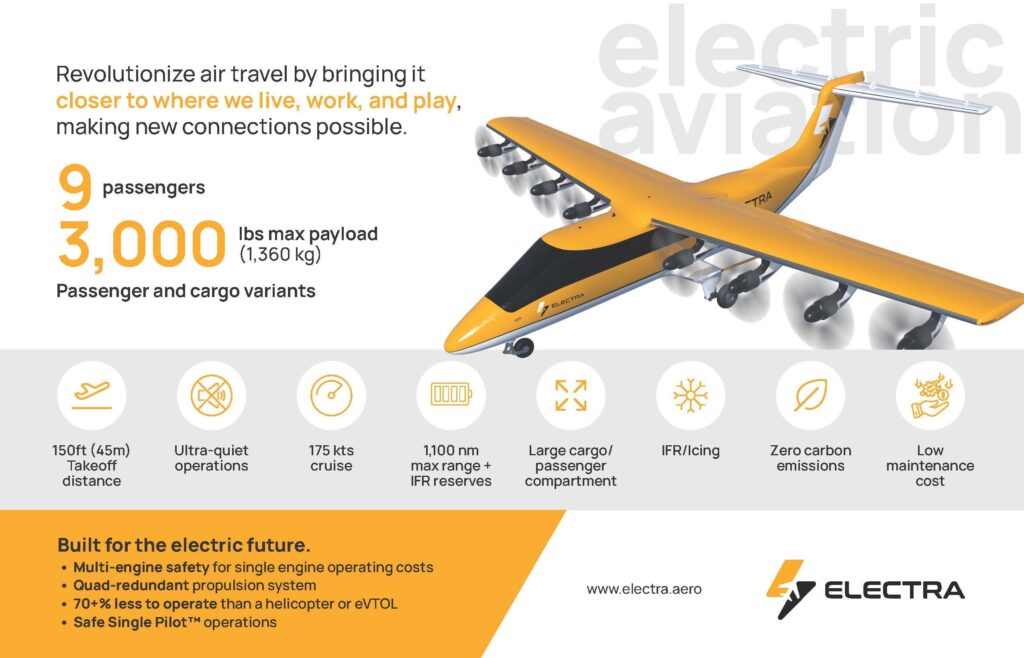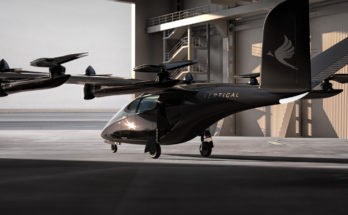
Electra.aero, Inc. recently unveiled the design of its EL9, a nine-passenger hybrid-electric aircraft. This piloted aircraft utilizes electric and turbine power for takeoff and flight, aiming to be a sustainable option for regional travel.
Building upon successful testing of their EL2 Goldfinch prototype, Electra enters the development phase of the EL9. The EL9 leverages blown lift technology to achieve short takeoffs and landings in areas typically limited to helicopters, offering greater flexibility than traditional airplanes.
This technology aims to provide cost-effective regional air service by operating from smaller airports or unconventional landing sites. The EL9 boasts lower emissions and noise pollution compared to conventional aircraft. Additionally, its hybrid system extends its range and allows for in-flight battery recharging, eliminating the need for ground charging infrastructure.

The EL9 combines blown lift technology with distributed electric propulsion using four independent battery packs and a small turbine-powered generator that drives eight electric motors distributed along the wing to provide high lift at low airspeeds. The aircraft can take off and land in as short as 150 feet, and cruises at 175 knots. With range and payload to fly missions that matter, the EL9 will carry nine passengers with baggage or 3,000 pounds of cargo for 330 nautical miles, and has a maximum ferry range of 1,100 nautical miles with IFR reserves. It will be certified for IFR and flight into known icing conditions. While the EL9 will be equipped with two pilot crew stations, Electra’s Safe Single Pilot technology with fly-by-wire controls will enable ease of precision landings for a single pilot.
Electra has over 2,100 orders for the EL9 from 52 operators worldwide, representing more than $8 billion in market value. The first test flights are planned for 2027, with certification and service entry anticipated in 2029 under FAA Part 23 regulations.
A military history enthusiast, Richard began at Forecast International as editor of the World Weapons Weekly newsletter. As the Internet grew in importance as a research tool, he helped design the company's Forecast Intelligence Center and currently coordinates the EMarket Alert newsletters for clients. Richard also manages social media efforts, including two new blogs: Defense & Security Monitor, covering defense systems and international issues, and Flight Plan, which focuses on commercial aviation and space systems. For over 30 years, Richard has authored the Defense & Aerospace Companies, Volume I (North America) and Volume II (International) services. The two books provide detailed data on major aerospace and defense contractors. He also edits the International Contractors service, a database that tracks all the contractors involved in the programs covered in the FI library. More recently he was appointed Manager, Information Services Group (ISG), a new unit that encompasses developing outbound content for both Forecast International and Military Periscope.



